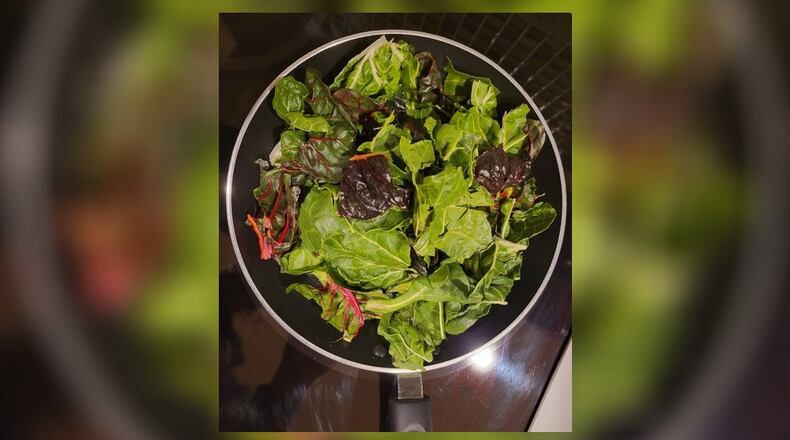Chard differs from its botanical relation, though. We eat the root of the beet and usually discard the leaves, but we eat the leaves of the chard while the root is inedible.
The chard ribs come in many colors, including red, green, gold, and white. Rainbow chard is a mix of the different colors, not a separate variety.
Although chard is often called Swiss chard, it is thought to have originated not in Switzerland but in southern Italy, specifically Sicily. Why it’s called “Swiss” is unclear.
Chard is said to be especially popular in Italian food, but I have four Italian cookbooks and the combined number of recipes in the four is one. The single recipe, in Patricia Wells’ “Trattoria,” is a fussy baked torte with chard and Parmesan cheese.
My recommendations for cooking chard are primarily what not to do. The first step for me is to strip away the leaves from the ribs and stems. The ribs and stems are edible in principle, but I discard them because I find that them too fibrous.
If you do want to cook the ribs and stems, they need separate handling from the leaves. Chop them into bite-sized pieces and throw them into a stir-fry dish, or bake them for a few minutes.
Next, tear the leaves into several pieces. But don’t mince them.
Steaming or boiling chard leaves in a pot or microwave is not recommended, because the result is slimy and the nutrients leach into the water.
Baking chard also doesn’t work, as the leaves turn unappealingly brittle in the dry heat of an oven. It’s an etymological coincidence, but relevant for cooking, that “chard” as a noun is the vegetable whereas “charred” as an adjective means burnt.
Baking chard is OK if it is shredded and buried in a casserole or pastry, such as Patricia Wells’ torte.
So what’s left? A frying pan on the stovetop. But one must proceed with care.
Saute the torn chard leaves gently in olive oil for a couple of minutes. Do not start with high heat, because the chard will quickly burn and be inedible.
Because of its low smoke point, olive oil is not suitable for frying at high heat. But when cooking chard, olive oil’s character is an asset in helping to avoid charring the chard.
After cooking the chard at low heat for a couple of minutes, turn the burner down to simmer and cover the pan for a few more minutes. Through close contact with the olive oil, the chard becomes moist but not watery.
Remember: don’t char the chard.
MOON Co-op is Oxford’s consumer-owned full-service grocery, featuring natural, local, organic, sustainable, and Earth-friendly products. The store, located at 516 S. Locust St. in Oxford, is open to the public every day. See it online at mooncoop.coop.
About the Author
